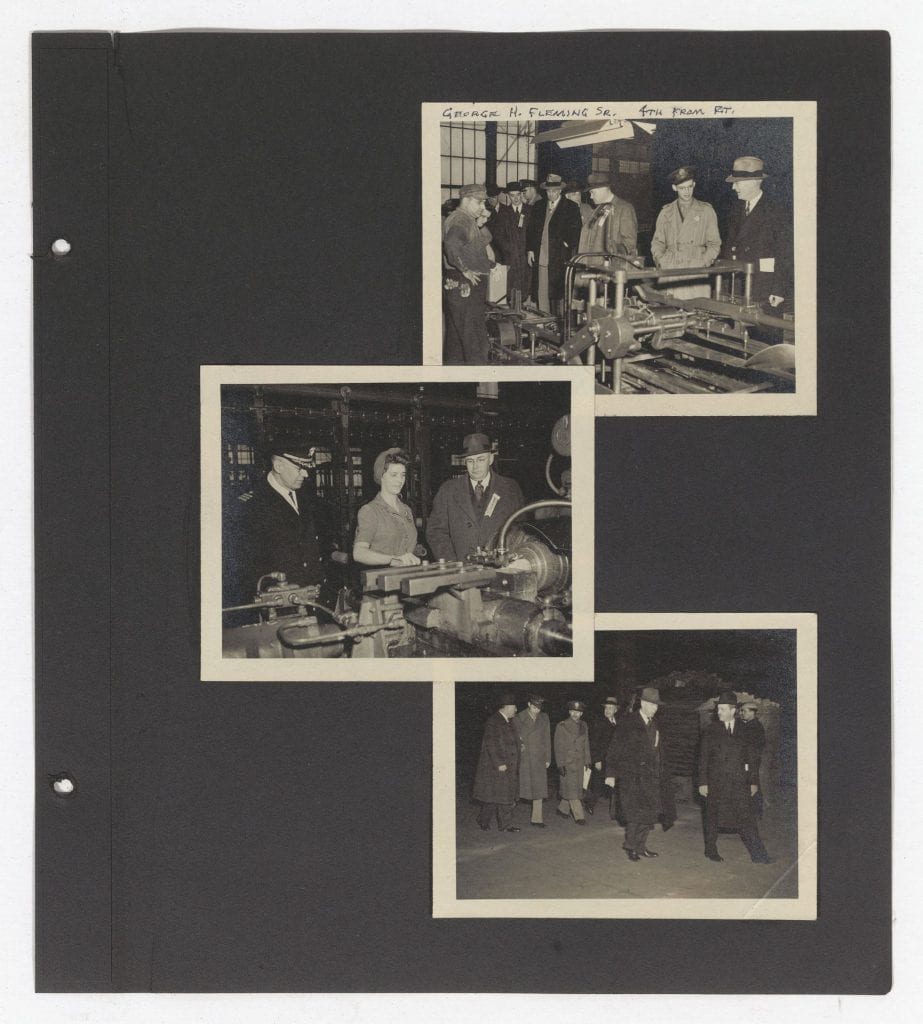Nazi Germany and Soviet Russia signed the infamous Molotov Ribbentrop Pact, marking the start of World War II in 1939. As it had in World War I, war time dramatically changed the political calculus of the labor movement. While mobilized defense-related industries reaped enormous profits from lucrative cost-plus government contracts, organized labor sacrificed wage increases and pledged a no-strike policy to boost efficiency. These sacrifices seemed to most often fall the hardest on those with the least left to give, and the war added political tension to the growing fractures which split the organized labor movement as a whole.
John L. Lewis identified as an isolationist and staunchly disagreed with Roosevelt’s willingness to involve the United States in the war abroad. In the 1940s, Lewis broke publicly from Roosevelt and actively campaigned against the president vowing that he would leave his position as the President of the CIO should Roosevelt succeed. When Roosevelt did succeed in 1941, Lewis remained true to his word and resigned leaving Philip A. Murray to ascend to become the President of the CIO.
Lewis remained in his position as the President of the UMWA and continued to wield his influence to lobby against the harsh conditions for workers at home as the war pushed production in the basic industries to the brink. Between July 1940 and December 1941, some 2,500,000 workers trained for industrial jobs at war plants to aid the manufacture of war supplies.

However, under the pressure of war working conditions continued to deteriorate. Organizers considered the fight for better conditions a form of democracy at home, while federal officials saw strikes and walk-offs as the kind of selfish obstruction that prevented the United States’ ability to assist soldiers in Europe. In 1942, Roosevelt established the War Production Board followed by the War Labor Board and the War Manpower Commission to help ease tensions. These new agencies allowed the federal government control over the means of production. The War Production Board established government contracts for industrial supplies. The War Manpower Commission recruited new workers to the basic industries to support those contracts and the War Labor Board adjudicated disputes to ensure that strikes and walk-offs did not threaten the ability of industries to produce necessary supplies.
As the national demand for industrial labor grew, organized labor once again took on a new identity. Throughout the 1940s, workers traditionally excluded from organization were brought into the workforce to fill the demand. This often included workers who embodied any number of ethnic, racial, or gender identities that failed to conform to the prototypical white, native, male worker typical of most workplaces.

The above inventory of stoppages and strikes at the Dominion Coal Company depicts the racism of members of the United Mine Workers of America during World War II who would frequently strike to protest the presence of non-native workers.While even the progressive CIO often excluded these workers, where these workers could organize they added strength in numbers that allowed the CIO to increasingly expand its reach. In 1942, SWOC and the AA formally disbanded in order to found the United Steel Workers of America (USWA). Philip Murray, then President of the CIO and former SWOC Director, was named the USWA’s first President. After years of defeat on the front lines, the CIO finally accomplished the successful organization of steel workers.